- Continue Shopping
- Your Cart is Empty
Making Your Own Calendula Oil

What You'll Need
Equipment
- food dehydrator
- air-tight jar
- measuring cup
- stainless steel bottling funnel
- stainless steel mesh strainer
Ingredients
- Enough dried calendula flowers to fill your favorite jar
- Enough cold-pressed olive oil to cover the flowers
Calendula are the sweetest garden companions. Their flowers are usually a brilliant poppy orange color, but there are yellow and peachy varieties available, as well. It’s the brash orange flower that dominates an entire bed of our garden in Bonny Doon; those little flower-powerhouses have been pumping out the blooms since the middle of gray winter, and they’re in full swing now, a bright swath or vivid orange that rhymes with nothing else in the garden. Still, they are welcome, as they walk the thin line between weed and wildflower; they’re common enough that we don’t mind pulling them out of the lettuce bed without much fanfare but are useful in so many ways that we leave plenty for bees and humans too. Calendula grows quickly, and it attracts beneficial insects while deterring harmful pests. But there is more to love!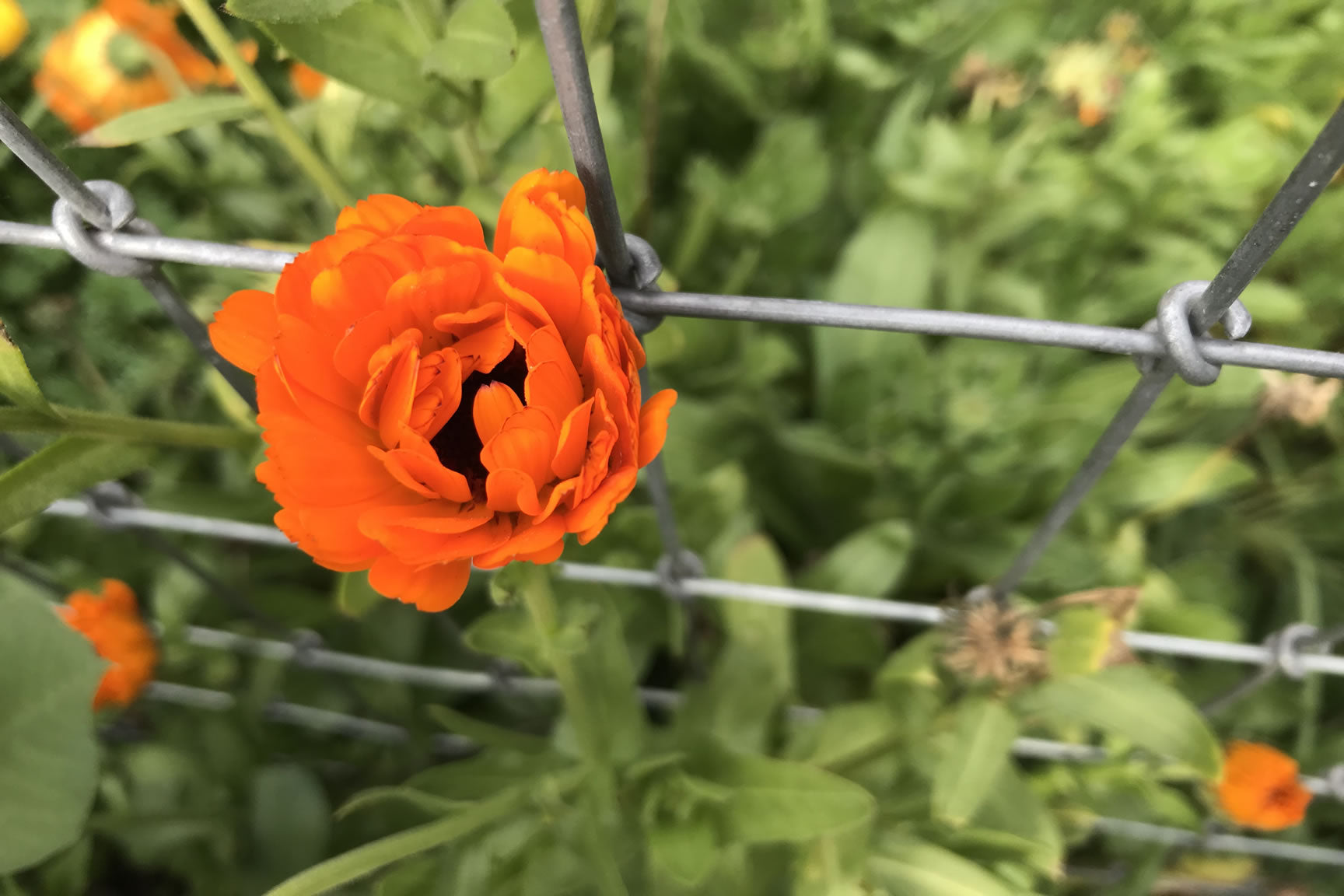
The flower petals are a great addition to salad mixes, with a bright pop of color and a mild floral flavor. They can be floated in teas or in the bathtub for a soothing sip or soak. (To be clear, Mountain Feed does not recommend drinking your bathwater). We like to pick the flower heads and dehydrate them, too, to make this simple and luxurious oil.
Calendula oil is beautiful; I will admit that I was first inspired to make some after seeing an entire half gallon mason jar filled with petals infusing into a rich oil base. That color! Like liquid sunset. Before I ever knew what to do with the stuff, I was enchanted. Infused into a quality cold-pressed olive oil the calendula oil can be used in salad dressings or drizzled on bread to appreciate the color and light marigold flavor. The best uses for it, though, may be topical.
Calendula oil is a super-effective topical oil; it makes an excellent base for salves, and it can be used alone as a luxurious massage oil. Calendula is an herb often found in baby products; it’s non-irritating, gentle and cooling and effective. It ranks up there with aloe as the best thing to put on sunburned or wind-chapped skin. After showers, on sensitive skin, the calendula-infused oil makes a rich, soothing balm, a gift from the flower realm to your body.
Almond oil may be substituted for olive if the oil is to be used primarily for skin care. Make sure the flowers are dry before adding them to the oil; too much moisture in the petals can cause the oil to go rancid.
Directions
Harvest the calendula flowers and arrange them face down on dehydrator sheets.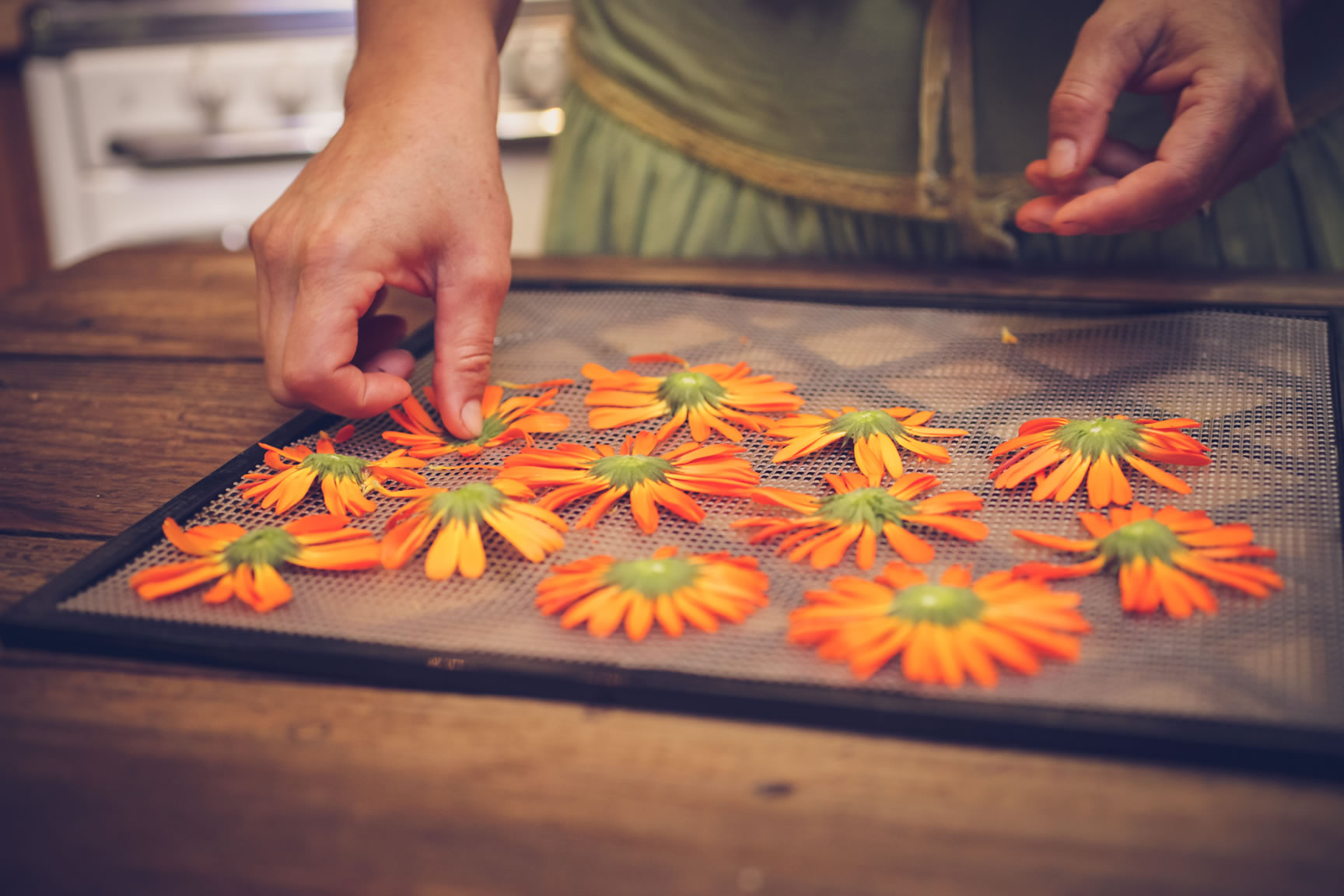 Run the dehydrator at a low-temperature setting to preserve the delicate properties of the flowers.
Run the dehydrator at a low-temperature setting to preserve the delicate properties of the flowers.
When the flowers are dry, pluck the petals from the green centers. 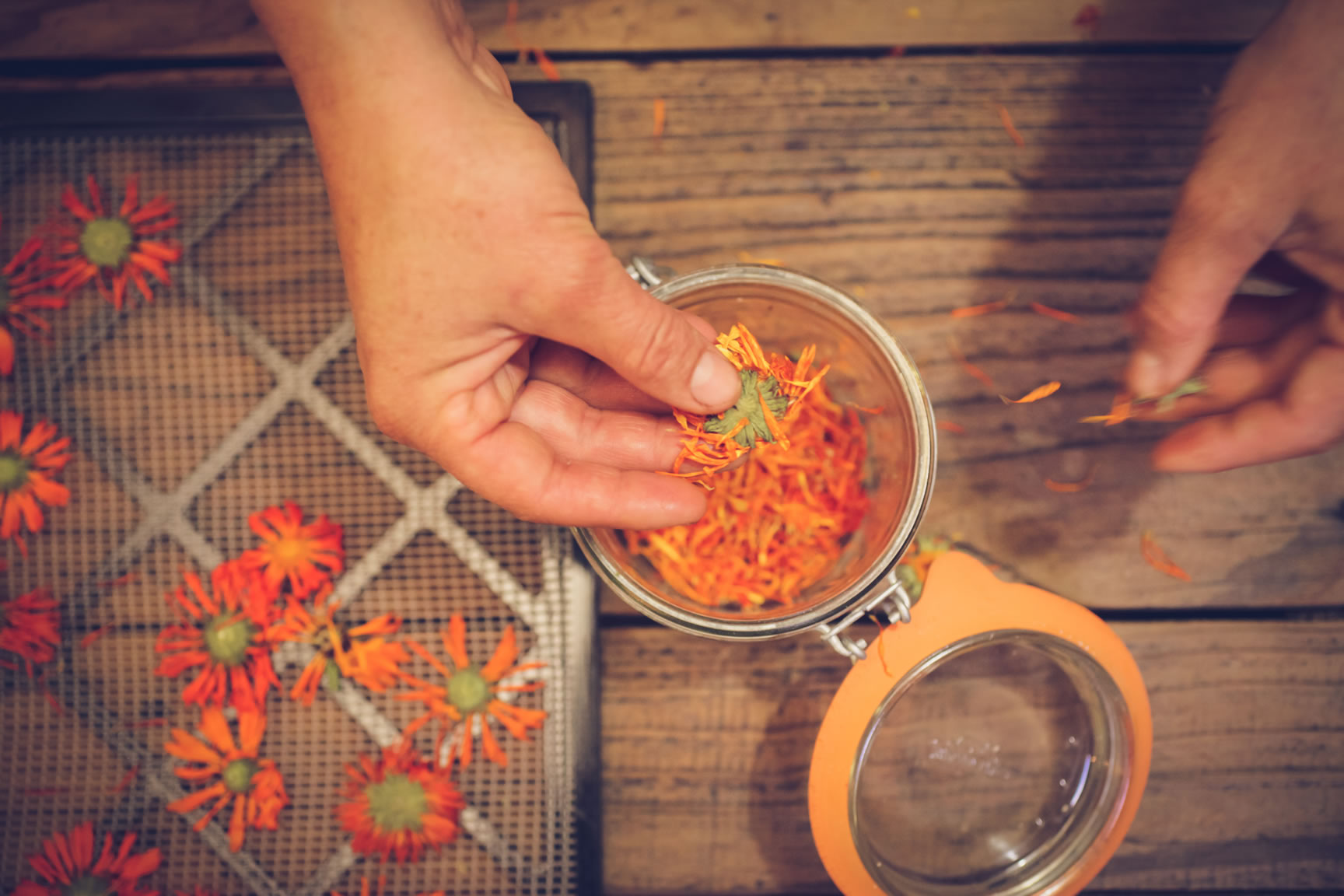
Drop the petals into a jar. If you plan on making a large batch, you can store the petals in an airtight jar until you have saved up enough to make a batch of oil.
Pour olive oil over the calendula petals, making sure to cover the petals by at least 1 inch.
Secure the lid and allow the petals to infuse at room temperature for 4- 6 weeks. Shake or stir the jar daily.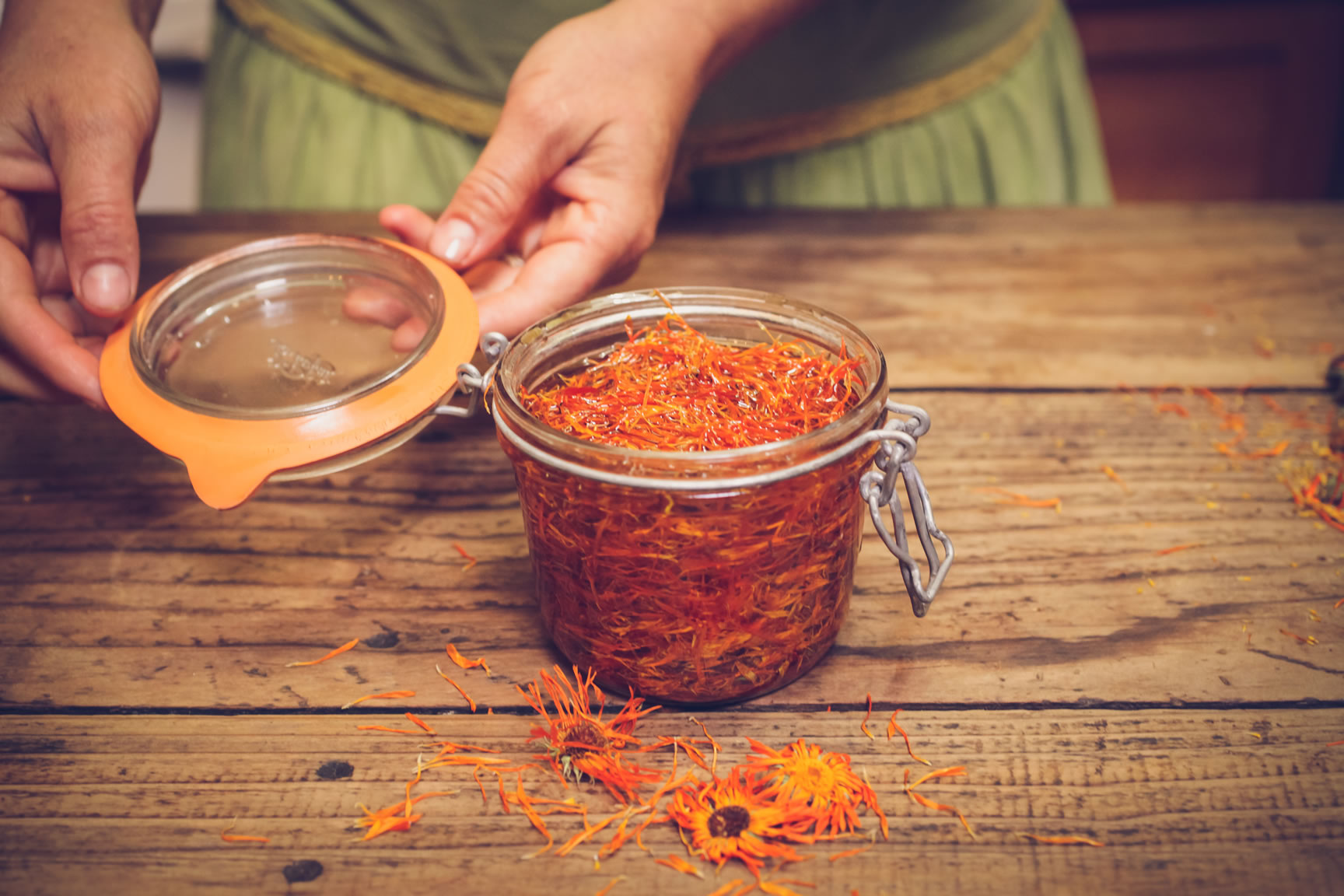
After 4-6 weeks, strain the petals from the oil. Store the infused oil in a cool, dark place.
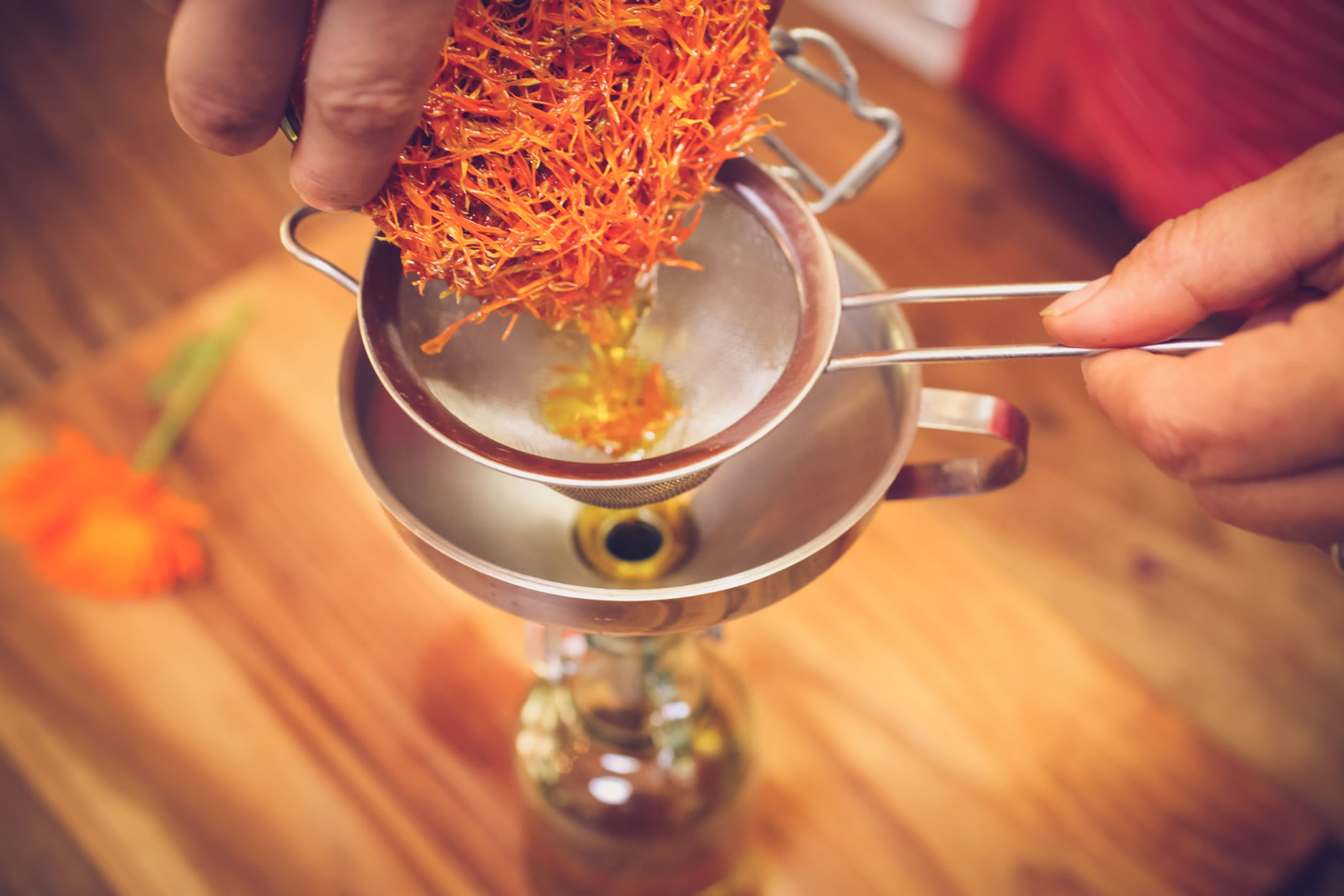
Use the infused oil to make salves, massage oils, lip balm, or other skin-care products.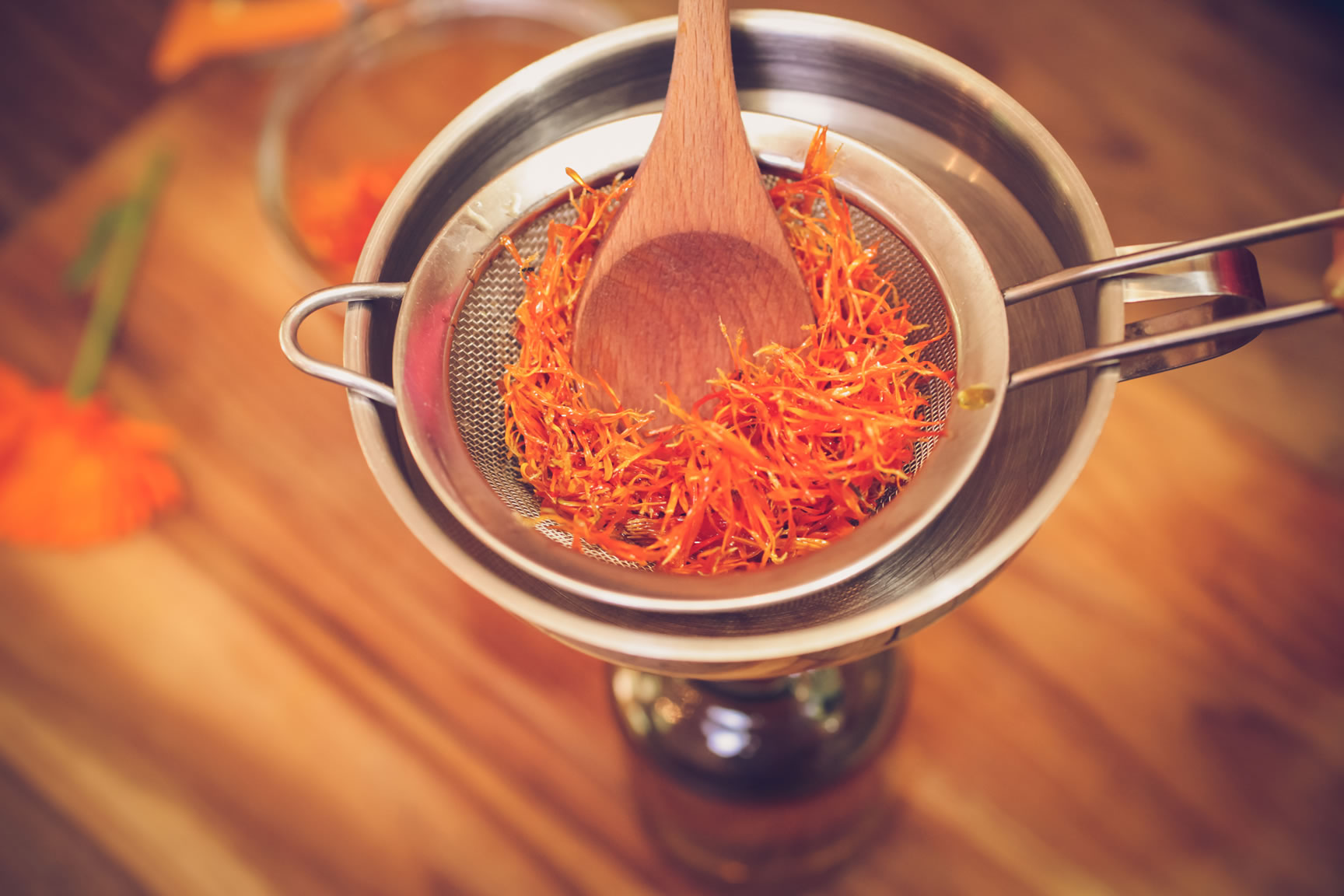
Over to You
It’s part of our mission here at Mountain Feed to help you make your own homemade, healthy home products more often. Stop by and say hello on Facebook, Twitter, Instagram or Pinterest. Or, as always, you can do it the old-fashioned way and come by the store to speak with one of our in-house experts.
